Ong Pagoda in Can Tho is a sacred temple located in the Mekong Delta that showcases ancient Chinese architecture. With a history spanning over 120 years, this pagoda rightfully claims its spot as one of the renowned spiritual tourist destinations in Can Tho.
While navigating the water-rich Mekong Delta, visit Ong Pagoda to experience the distinctive Chinese architectural charm. Allow yourself to absorb the unique aesthetics while fostering a positive mindset, seeking inner peace and happiness for your loved ones. For more travel insights, check out Vietnampeace.com.
1. Where is Ong Pagoda in Can Tho?
The original name of the pagoda is Quang Trieu Hoi Quan, meaning the assembly hall of the Chinese in Quang Chau and Trieu Khanh prefectures (in Guangdong province, China). The Ministry of Culture, Sports, and Tourism recognized the pagoda as a national cultural and historical relic in 1993.
So, where is Ong Pagoda located? The pagoda is at 32 Hai Ba Trung Street, Tan An Ward, Ninh Kieu District, Can Tho City.
2. History of Ong Pagoda in Can Tho
Ong Pagoda (Can Tho) was built in 1894 on a 532m2 piece of land over two years and completed in 1896, named Quang Trieu Hoi Quan. Located in a densely populated residential area, the pagoda served as a place of worship for the Chinese community at that time. In 1993, the pagoda was officially recognized as a national historical relic.
3. How do you get to Ong Pagoda in Can Tho?
To reach this riverside pagoda, follow this route: From the city center of Can Tho, take Road 3A to Vo Van Kiet and continue straight through Mau Than Street to Ninh Kieu. Then, follow Nguyen Viet Hong Street to Dai Lo Hoa Binh at An Lac, turn left after Kinh Do Mooncake Store (Can Tho), and continue to Hai Ba Trung Street in Tan An. Keep going until you spot the pagoda.
4. Interesting Experiences at Ong Pagoda in Can Tho
4.1. Explore the Beauty of Ong Pagoda’s Ancient Chinese-style Architecture
After more than 120 years, Ong Pagoda’s architecture remains beautifully preserved, as if it were just completed, exuding a timeless charm. According to tour guides, the pagoda’s appearance stands out with multicolored decorative architectural elements that captivate visitors’ eyes. The enclosed courtyard is constructed in the shape of the Chinese character “Quoc” (國), surrounded by walls, with a spacious, well-lit central yard.
Ong Pagoda represents a unified yin-yang architectural concept from the overall design to the minor details. The mythical creatures depicted in the pagoda symbolize national prosperity, peace, and long-lasting prosperity. The pagoda’s roof is adorned with dragon-and-moon sculptures, transforming carp into dragons, phoenixes, and other symbols of good fortune and blessings.
4.2. Participate in Ong Pagoda’s Festivals with Exciting Activities
Visitors not only get to explore the architecture of Ong Pagoda but also have the opportunity to engage in traditional Chinese-influenced festivals:
4.2.1. Memorial days – Commemorative ceremonies:
– Memorial Day for Quan Thanh De Quan: June 24th every lunar year.
– Memorial Day for Thien Hau Thanh Mau: March 23rd every lunar year.
– Ong Bon Commemorative Ceremony: March 15th of every lunar year.
4.2.2. Festival days:
Like Vietnam’s longstanding cultural traditions, Ong Pagoda also hosts ceremonies on festive days such as Tet, full moon days, and the first day of each lunar month.
In addition, the pagoda also organizes a lantern festival every ten years. The most recent ones were held in 2007 and 2017. During the festival, visitors can participate in lantern auctions. The person who owns a lantern is believed to encounter good luck and success. The festival includes fun activities such as lion and dragon dances, martial arts competitions, and Quang Tri-style stage performances.
At the Ong Pagoda festival in Can Tho, both locals and Buddhist followers dress neatly and solemnly, light candles, and offer trays of offerings to the deities to seek blessings for family safety and prosperity.
4.3. Sacred Tattooing at Ong Pagoda in Can Tho for Peace
Getting a tattoo at Ong Pagoda is also an interesting cultural aspect. Many pilgrims and Buddhists from various regions come here to seek guidance. The tattoos provide insights into destiny, love, offspring, etc. The mystical stories surrounding the sacredness of these tattoos make them even more appealing to tourists.
5. Some Information about Ong Pagoda in Ninh Kieu, Can Tho
5.1. Who is Worshipped at Ong Pagoda in Can Tho?
5.1.1. Front Temple:
– On the left: Worship of General Ma Tien and the tethered horse.
– On the right: Worship of Phuc Duc Chinh Than (Ong Bon).
– Inside: Worship of ancient deities such as Ong Ba Muoi, the lion god, etc.
5.1.2. Main Temple:
– In the middle: Worship of Quan Thanh De Quan (Guan Gong or Guan Yu). He is a heroic figure with complete virtues, symbolizing justice and assistance.
– On the left: Worshiping Poinsettia Dong Vinh and Tai Bach Tinh Quan (also known as God of Wealth);
– On the right: Worship of Thien Hau Thanh Mau (Heavenly Holy Mother).
– Additionally, there is an altar for the Guanyin.
5.2. Entrance Fee to Ong Pagoda in Can Tho
Visitors coming to Ong Pagoda in Can Tho are FREE to enter.
5.3. Ong Pagoda’s Opening Hours
Ong Pagoda is open from 7:00 am to 6:00 pm.
Note: Depending on the COVID-19 situation, the pagoda’s opening and guest reception regulations may change.
Ong Pagoda in Can Tho, with its exquisite architecture and Chinese solid influence, is undoubtedly one of the fascinating destinations that travelers should not miss when visiting the “land of white rice and clear water.” Here, visitors can understand more about the spirit of unity and the cultural values of the Chinese community.
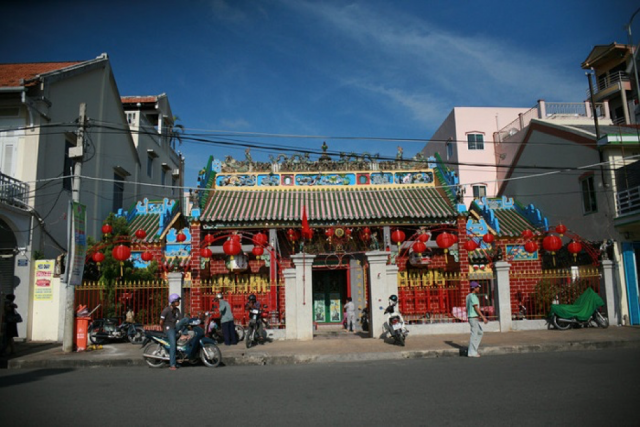
The temple is located on the street – Tourist destination of Can Tho (Photo: Collection)
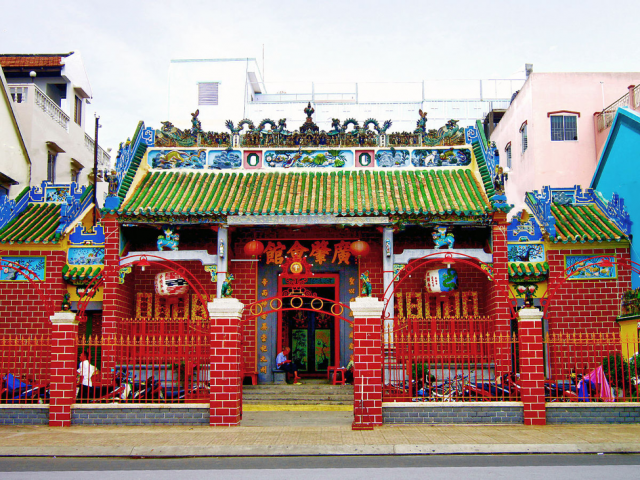
Outside, the temple gate is covered in a vibrant color (Image: Collection)
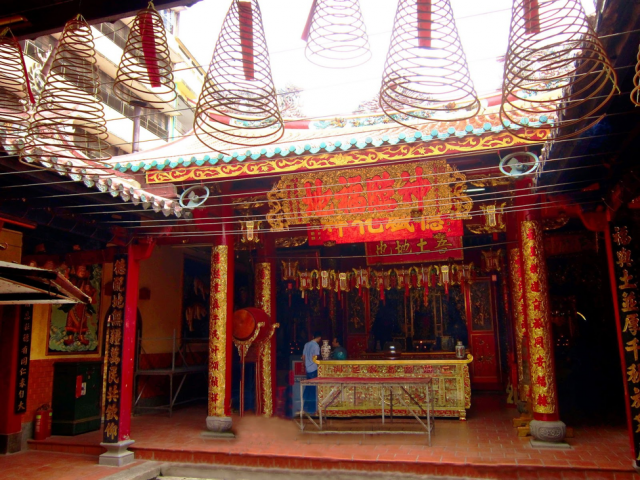
Natural light from the sky (Photo: Collection)
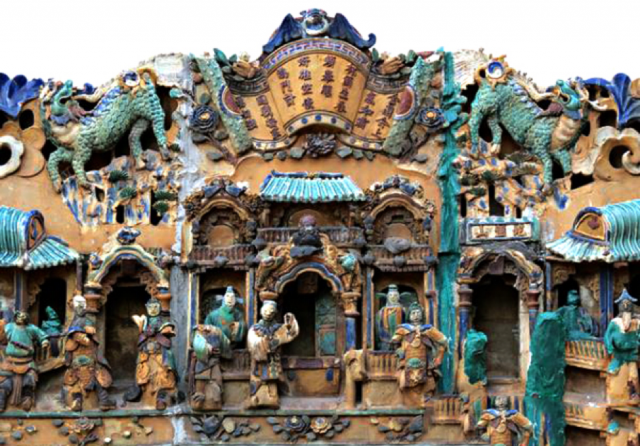
Unique architectural array (Image: Collection)
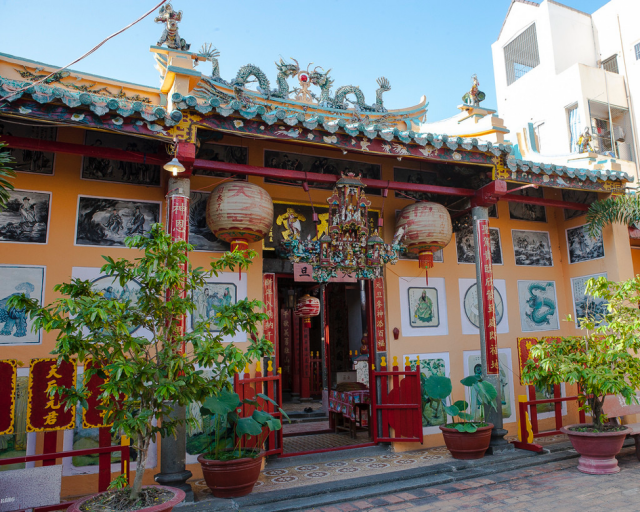
Many impressive decorative pieces (Image: Collection)
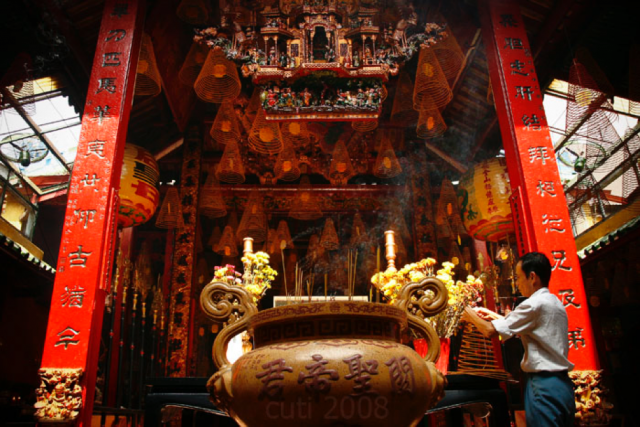
Magnificent electricity booth (Image: Collection)
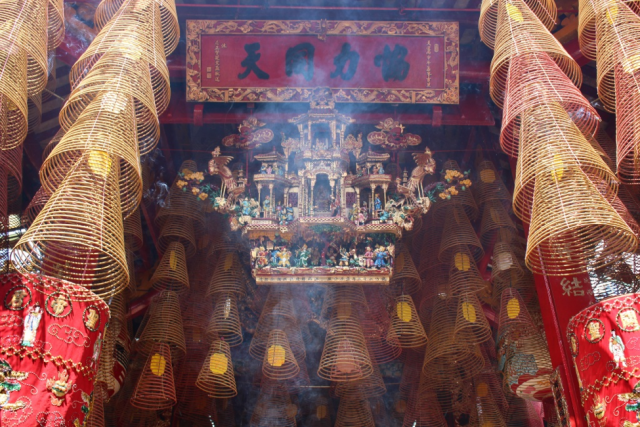
Incense smoke spreads in the altar (Image: Collection)
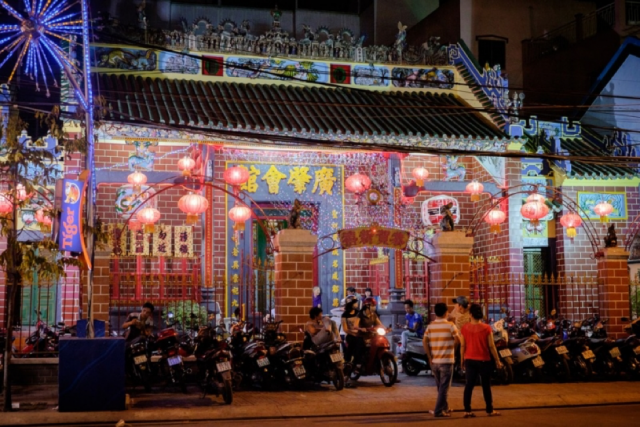
Learn many unique cultural traits (Image: Collection)
